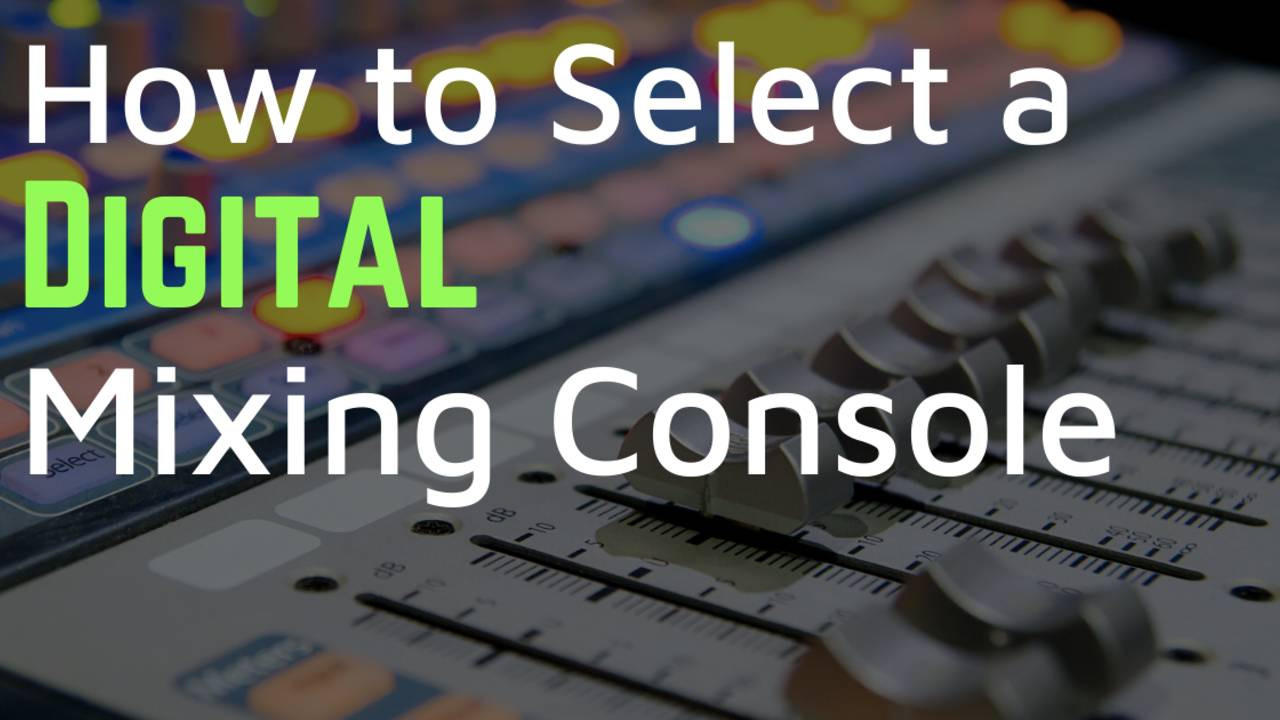How to Select a Digital Mixing Console

Digital consoles have truly revolutionized the act of mixing sound in worship.
It used to be that you would have to use a lot of outboard effects equipment, racks of processors, and audio patch panels to get the sound and flexible routing you wanted.
Today, even the most modest digital console can perform some pretty remarkable feats.
Simply having access to reverb or compression on every channel is great. And being able to use a full parametric EQ anytime you need it is a life saver.
The precision available to sound techs with today's mixing console technology is amazing. And surprisingly, the cost of a decent console isn't too bad, considering the utility provided.
That being said, digital may not be for everyone. And that's OK. I'm still a fan of using a good old analog console. If it sounds good and gets the job done, use it! (Check out this list of analog and digital consoles for churches.)
But if you're thinking about upgrading from analog to digital, it's important to consider a few variables before selecting your console.
There are obvious things, like:
- number of channels
- aux outputs available
- effects processing limitations (e.g. reverb engines)
- recallable or fixed preamps
A few other technical concerns might be:
- digital snake or digital audio input options
- channel expandability
- wireless mobile device control
- multi-track recording ability
But the most important consideration is...
Who's going to use it!
With all of the features available in any given digital console, it can be fairly easy to find one that can fit your budget and provide reasonable features.
But the best console in the world won't do you any good if the volunteer techs tasked with operating it have a hard time navigating the menus and features of the device.
Some consoles are designed for simplicity, with limited software layers and intuitive layouts.
Presonus does a pretty good job bridging the analog-digital divide for operators with their StudioLive series.
Yamaha TF-series and QSC TouchMix are also quite approachable for the new sound tech with little experience.
Allen & Heath and Soundcraft have also maintained an approachable workflow with their entry-level digital consoles.
Of course, a conversation about digital consoles for churches cannot leave out the venerable Behringer X32.
Is the X32 to the best digital console ever? No. But it is jam packed with value when considering all of the features at the available price point.
And even though the X32 is an excellent choice for a number of churches, it does require some training to dig through the software layers and really understand how it works.
Here are a few digital consoles available on Amazon.
Why Training Is So Important
Sound techs that are not confident behind the mixing console may not deliver the best sounding mix week to week. And that makes perfect sense.
If I'm struggling to learn the art and craft of mixing sound while also getting lost in layers of console software, there's a chance that I'm stressing out and not paying enough attention to how something really sounds.
When that's the case and my eyes are staring at a screen, I'm at risk of just struggling to keep things working. And that's no way to mix. We've all done it, and it ain't fun!
So, when considering the next digital console upgrade, be sure to check all those technical needs and wants boxes, but then think carefully about the team that will be using it every week.
Be sure to include some extra time and money in your budget for training resources. There are plenty of free training videos out there, and there are some great paid options depending on the mixing console.
I've got a list of basic training videos for a variety of digital consoles on the Great Church Sound website.
The right console paired with the right system and combined with informed sound techs makes a great combination.
Resources
If you have an X32 console and would like some great training on it, I highly recommend the X32 Mastery video training course by Kade Young at Collaborate Worship. There are other free videos out there, but Kade's video series easy, fast, and fun to learn the X32 features that can make the biggest impact in your worship mix. You can check out the Behringer X32 Mastery training course here.
Note: this post originally appeared as a guest post on the Twelve:Thirty Media blog.
Please note that some of the links and discount codes included throughout this website are affiliate links and Great Church Sound and/or James Wasem will earn a commission if you decide to make a purchase. This is at no additional cost to you.
These are tools I personally have used or recommend because they are helpful and useful, not because of the commissions made if you decide to buy something.
Affiliate earnings and commissions help keep this site active and populated with fresh content. If you decide to purchase something through these links, I would like to say Thank You!






